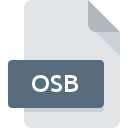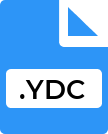.OSB File Extension

Osu! Storyboard File
| Developer | peppy |
| Popularity | |
| Category | Game Files |
| Format | .OSB |
| Cross Platform | Update Soon |
What is an OSB file?
.OSB file extension is associated with Osu!, a popular rhythm game that challenges players to follow musical beats and rhythms.
An Osu! Storyboard File (.OSB) contains visual and audio elements that enhance the gameplay experience.
These files are essential for creating immersive and interactive storyboards that sync with the music, adding a layer of visual storytelling to the rhythmic challenge.
More Information.
Initially, Osu! was inspired by the Nintendo DS game Osu! Tatakae! Ouendan. The game introduced a unique way of interacting with music, using the touch screen to follow rhythms and beats.
As the game evolved, the need for more dynamic and visually appealing gameplay elements became apparent.
This led to the development of the .OSB file format, which allowed creators to design intricate storyboards that could be integrated seamlessly into the game.
The primary purpose of the .OSB file was to offer a way to script visual elements that would complement the gameplay.
This included the ability to control sprites, animations, and background changes in sync with the music. Over time, the complexity and creativity of these storyboards grew, with creators pushing the boundaries of what could be achieved within the game.
Origin Of This File.
The .OSB file extension was developed as part of the Osu! game ecosystem. Osu! was created by Dean “peppy” Herbert in 2007 and quickly gained a dedicated community of players and creators.
The inclusion of .OSB files allowed for a richer user experience by enabling the addition of custom animations, backgrounds, and effects synchronized to the music tracks used in the game.
File Structure Technical Specification.
The .OSB file is a text-based file written in plain text, making it easily readable and editable using any text editor.
The structure of an .OSB files typically include sections that define different aspects of the storyboard. Here is a breakdown of the key components:
1. General Information: This section includes metadata about the storyboard, such as the audio file it is associated with, the title, and the artist.
2. Events: This is the core section where the visual elements are defined. Events include:
- Sprite: Defines an image and its properties.
- Animation: Controls the animation of a sprite.
- Sound: Integrates sound effects.
- Background: Sets the background image or video.
3. Timing: Defines the timing of events, ensuring they sync accurately with the music.
4. Commands: A list of commands that manipulate the properties of sprites, such as moving, scaling, fading, and rotating.
How to Convert the File?
Converting .OSB files are not a common task, as they are specifically designed for use within Osu!. There might be cases where you want to convert an .OSB file to a different format for editing or archiving purposes. Here are a few methods:
- Text Editors: Since .OSB files are plain text, you can open them in any text editor (like Notepad, Sublime Text, or Visual Studio Code) and manually convert the contents to another text-based format, such as JSON or XML.
- Custom Scripts: You can write a script in a programming language (such as Python) to parse the .OSB file and convert its contents to another format. This would involve reading the file line by line, extracting the relevant information, and writing it to a new file in the desired format.
- Osu! Editor: The Osu! game editor allows you to create and edit storyboards. While it doesn’t directly convert .OSB files to other formats, you can use it to modify the storyboard and then save it within the game’s ecosystem.
Advantages And Disadvantages.
Advantages:
- Customization: Allows for highly customized and unique visual experiences in Osu! maps.
- Sync with Music: Enhances gameplay by synchronizing visual elements with music, providing a more immersive experience.
- Community Engagement: Encourages creativity within the community, with users creating and sharing their storyboards.
Disadvantages:
- Complexity: Creating detailed and synchronized storyboards can be complex and time-consuming.
- Performance: Intensive storyboards with many elements can impact the game’s performance, especially on lower-end systems.
- Learning Curve: Requires knowledge of the specific syntax and commands used in .OSB files.
How to Open OSB?
Open In Windows
- Osu! Editor: The built-in editor in Osu! can be used to open and edit .OSB files.
- Notepad++: A powerful text editor that supports various programming languages and file formats.
- Visual Studio Code: A versatile code editor with extensions for enhanced functionality.
Open In Linux
- Osu! Editor: Can be run using Wine, though it might require some configuration.
- Gedit: The default text editor for the GNOME desktop environment.
- Visual Studio Code: Available for Linux and supports extensive customization.
Open In MAC
- Osu! Editor: Available through Wine or other compatibility layers, although it might require additional setup.
- TextEdit: The default text editor on macOS, suitable for basic editing.
- Sublime Text: A sophisticated text editor for code, markup, and prose.













